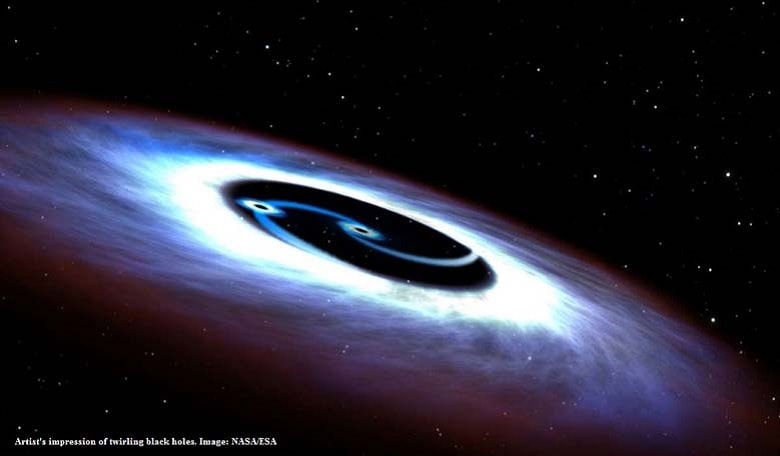Black holes are serious business. But scientists now say that they can also twirl.
Well, sort of, anyway. A recent discovery in the Markarian 231 galaxy, located 600 million light years away from Earth, suggests that a quasar in it is actually the product of two black holes, of vast difference in size, that perform a peculiar gravitational twirl around each other.
Based on Hubble data, which revealed the find, scientists believe that the unusual arrangement was formed when two galaxies collided with each other.
So far, the Markarian 231 quasar is the first find of its kind for science.











